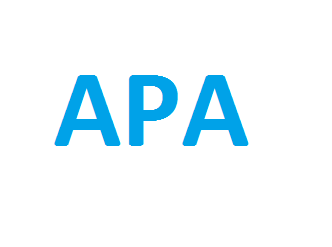
The Academic Perspective Procedia publishes Academic Platform symposiums papers as three volumes in a year. DOI number is given to all of our papers.
Publisher : Academic Perspective
Journal DOI : 10.33793/acperpro
Journal eISSN : 2667-5862
Variation in Crack Growth Properties and Its Effect on Fatigue Crack Growth Life for Al 7075-T6
M. Faruk Yaren;Ali Osman Ayhan
1184
418
Abstract
In this study, two different 3D crack propagation analyses are performed for Al 7075-T6. Each analysis has different crack growth constants (C-n) which are obtained by separate tests. The steps of crack growth analysis by using Fracture and Crack Propagation Analysis System (FCPAS) are detailed. As a result of crack growth analyses, stress intensity factor (SIF) distributions, growing crack fronts and crack growth lives are plotted and compared with the results of another study in the literature. The obtained results are in agreement with the literature data. Variation crack growth material properties and its effect on fatigue crack growth life is investigated. As a result, it has been shown that for the cases with the same stress intensity factor value, the variation crack growth material properties significantly change the crack growth life.
Keywords:
Crack Propagation, Paris-Erdogan Constants, Al 7075-T6, FCPAS, Crack Growth Life
References
[1] Paris, P., & Erdogan, F. (1963). A critical analysis of crack propagation laws. Journal ofbasic engineering, 85(4), 528-533.
[2] Forman, R. G. (1972). Study of fatigue crack initiation from flaws using fracturemechanics theory. Engineering Fracture Mechanics, 4(2), 333-345.
[3] Walker, K. (1970). The effect of stress ratio during crack propagation and fatigue for2024-T3 and 7075-T6 aluminum. In Effects of environment and complex load history onfatigue life. ASTM International.
[4] Wheeler, O. E. (1972). Spectrum loading and crack growth. Journal of basic engineering,94(1), 181-186.
[5] Newman, J. C. (1981). A crack-closure model for predicting fatigue crack growth underaircraft spectrum loading. In Methods and models for predicting fatigue crack growthunder random loading. ASTM International.
[6] McEvily, A. J., 1974. “Phenomenological and Microstructural Aspects of Fatigue”.Presented at the Third International Conference on the Strength of Metals and Alloys,Cambridge,England; published by The Institute and The Iron and Steel Institutes,Publication, W36, PP.204-213.
[7] Wu, W. F., & Ni, C. C. (2007). Statistical aspects of some fatigue crack growth data.Engineering Fracture Mechanics, 74(18), 2952-2963.
[8] Wei, R. P. (1970). Some aspects of environment-enhanced fatigue-crack growth.Engineering Fracture Mechanics, 1(4), 633-651.
[9] McDonald, V., & Daniewicz, S. R. (2002). An experimental study of the growth of surfaceflaws under cyclic loading. In Fatigue and Fracture Mechanics: 32nd Volume. ASTMInternational.
[10]Hudson, C. M. "A root-mean-square approach for predicting fatigue crack growth underrandom loading." Methods and models for predicting fatigue crack growth under randomloading. ASTM International, 1981.
[11]Kim, Sang Tae, Damir Tadjiev, and Hyun Tae Yang. "Fatigue life prediction underrandom loading conditions in 7475-T7351 aluminum alloy using the RMS model."International Journal of Damage Mechanics 15.1 (2006): 89-102.
[12]Manjunatha, C. M. "Fatigue Crack Growth Prediction under Spectrum Load Sequence inan Aluminum Alloy by K*-RMS Approach." International Journal of Damage Mechanics17.6 (2008): 477-492.
[13]Johnson, W. S. "Multi-parameter yield zone model for predicting spectrum crack growth."Methods and models for predicting fatigue crack growth under random loading. ASTMInternational, 1981.
[14]Dirik, Haydar, and Tuncay Yalçinkaya. "Fatigue crack growth under variable amplitudeloading through XFEM." Procedia Structural Integrity 2 (2016): 3073-3080.
[15]Standard, A. S. T. M. "E647." Standard test method for measurement of fatigue crackgrowth rates. Annual book of ASTM Standards 3 (2000).
[16]Ayhan, A. O. "Simulation of three-dimensional fatigue crack propagation using enrichedfinite elements." Computers & Structures 89.9 (2011): 801-812.
[17]Ayhan, A. O., and Herman F. Nied. "Finite element analysis of interface cracking insemiconductor packages." IEEE Transactions on Components and PackagingTechnologies 22.4 (1999): 503-511.
[18]Ayhan, A. O. "Mixed mode stress intensity factors for deflected and inclined corner cracksin finite-thickness plates." International Journal of Fatigue 29.2 (2007): 305-317.
[19]Ayhan, A. O. "Stress intensity factors for three-dimensional cracks in functionally gradedmaterials using enriched finite elements." International Journal of Solids and Structures44.25 (2007): 8579-8599.
[20]Dündar, H., and Ayhan A. O. "Multiple and non-planar crack propagation analyses in thinstructures using FCPAS." Frattura ed Integrita´ Strutturale 35 (2016): 360.
[21]ANSYS (2009) Theory Manual Version 12.0. Ansys Inc Canonsburg, PA, USA.
Cite
-
 %0 Academic Perspective Procedia (ACPERPRO) Variation in Crack Growth Properties and Its Effect on Fatigue Crack Growth Life for Al 7075-T6% A M. Faruk Yaren , Ali Osman Ayhan% T Variation in Crack Growth Properties and Its Effect on Fatigue Crack Growth Life for Al 7075-T6% D 11/9/2018% J Academic Perspective Procedia (ACPERPRO)% P 1313-1320% V 1% N 1% R doi: 10.33793/acperpro.01.01.203% U 10.33793/acperpro.01.01.203
%0 Academic Perspective Procedia (ACPERPRO) Variation in Crack Growth Properties and Its Effect on Fatigue Crack Growth Life for Al 7075-T6% A M. Faruk Yaren , Ali Osman Ayhan% T Variation in Crack Growth Properties and Its Effect on Fatigue Crack Growth Life for Al 7075-T6% D 11/9/2018% J Academic Perspective Procedia (ACPERPRO)% P 1313-1320% V 1% N 1% R doi: 10.33793/acperpro.01.01.203% U 10.33793/acperpro.01.01.203
© Academic Perspective 2018. All rights reserved.




